Surgery against Parkinson's disease

The clinical picture of the disease was described by doctor James Parkinson in 1817. Although at that time it was known as paralysis agitans, years later the French neurologist Charcot proposed the name of Parkinson's disease, as we know it since.
Since the clinical picture is known, it has often been treated medically by surgery. However, OR sessions were significantly reduced from 1968, when levodopa, the most effective drug against the disease, became accessible. Since then only the most serious patients operate.
Basic concepts
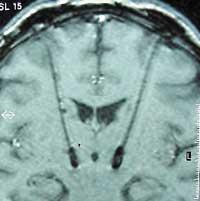
What happens in the patient's brain? Parkinson's disease is ultimately due to the loss of some cells in the intermediate zone between the brain and spinal cord, dopaminergic cells present in the black substance of the mesencephalon. These cells are gradually lost, but it is not clear why. This process involves genetic, environmental, infectious factors, etc.
However, the conclusions have been well analyzed. In the part of the brain that controls daily movements, basal nodes reduce the amount of dopamine. Dopamine is a neurotransmitter, a molecule that neurons use to communicate with each other. Therefore, the decrease in dopamine in the basal ganglia makes movement uncontrollable and the well-known symptoms of Parkinson's disease emerge.
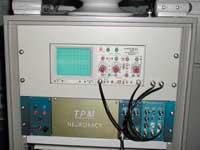
To begin to notice the symptoms, the patient has lost 80% of the cells of the black substance. At first he loses the dexterity in the hand and begins to notice the vibration and pain of the arm. From that moment on, symptoms continue to grow. The rigidity of the trunk, the cushioning of one's movements, vibration and walking are becoming more and more difficult. Psychiatric disorders, hallucinations and dementia also appear in the last steps.
One option is surgery
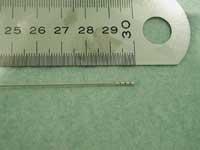
Medicines can be a great help in this degeneration process. However, over time they may lose effectiveness and be harmful. These include dyskinesia (uncontrollable movements without rhythm), fluctuation of symptoms throughout the day, and psychiatric alterations.
Currently, surgery is only applied to very ill patients. In addition, not all patients can be intervened. There are many limits, including the age of the patient. Also, keep in mind if you have another serious illness and if the higher or cognitive functions are complete to decide whether it is operated or not. And above all, we have to analyze in each case the degree of improvement involved in the intervention, for which special tests are used.
The goal of surgery is to control the excess activity of the substem. This activity is a consequence of the decompensation of circuits between neurons, so what is surgery? The subthalamic nucleus is a subthalamic nucleus that is stimulated by injury or by high frequency through drugs or temperature. These stimuli relieve the symptoms of Parkinson's disease. The intervention consists of placing the patient an electrode that constantly emits the stimulus to the brain.
For the first time scientists saw this effect on rats and monkeys. Subsequently, in 1993, a French group applied the same treatment in humans. Since then, this surgery has been used to treat the disease and has become a common practice. But how do you decide when, how and in what cases?
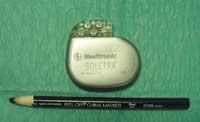
There is no doubt that surgery has great advantages and yet you have to consider the disadvantages. In fact, the intervention relieves the symptoms of the disease and considerably reduces the amount of drug to ingest. In addition, if the stimulation caused more damage than benefit, by joining the current the harmful effect would disappear.
And if the intervention improves the patient, how long will the improvement last? The truth is that, with such a recent operative method, it is still unclear how long the improvement of surgically induced symptoms will remain. In the medical literature, the most experienced teams have had patients under control for five years and generally claim that the improvement continues. However, as is happening in many other areas, the definitive treatment will be a cell transplant or genetic treatment. With these treatments the brain could produce dopamine in situ.
Operation
The patient is subjected to numerous research and analysis to determine whether he is prepared for the intervention. However, the decision to operate does not mean that the tests have ended. The doctor should know the exact location of the substem to make the smallest possible incision. For this, two sessions are held: first, three or four days before the intervention, the magnetic resonance of the brain is performed; finally, on the day of the intervention, the stereostatic frame is attached and the brain scanner is performed. Both sessions give an image of the patient's brain and come together with complex software. This 'fusion' of images allows to locate exactly the substem in Cartesian coordinates.
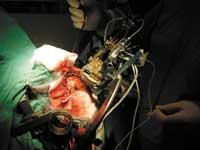
But the search work has not ended, we still have to determine the neuronal group in which we have to act, that is, measure the activity of neurons, for which it is explored with an electrode attached to an oscilloscope. Once the right neurons are identified, the same electrode is used to cause microstimulation. In this phase it is essential that the patient stay as fast and awake as possible, since it will be he who provides the doctor with the necessary information, since in principle and depending on what the patient feels as a result of the fulfillment of the given orders, the doctor can know whether the stimulation produces damage or not. In the absence of problems, the definitive stimulation electrode replaces the previous one.
Subsequent follow-up requires additional magnetic resonance at twenty-four hours. This resonance is done to detect possible problems, i.e. if the electrode has been moved, if a clot has occurred, etc. Finally, if everything is fine, a new operation is performed to introduce a battery that provides electric current to the electrode. The battery is placed under the collarbone, under the membrane. Once the frequency of the current, the power and the pulse duration are fixed, the process is completed.





